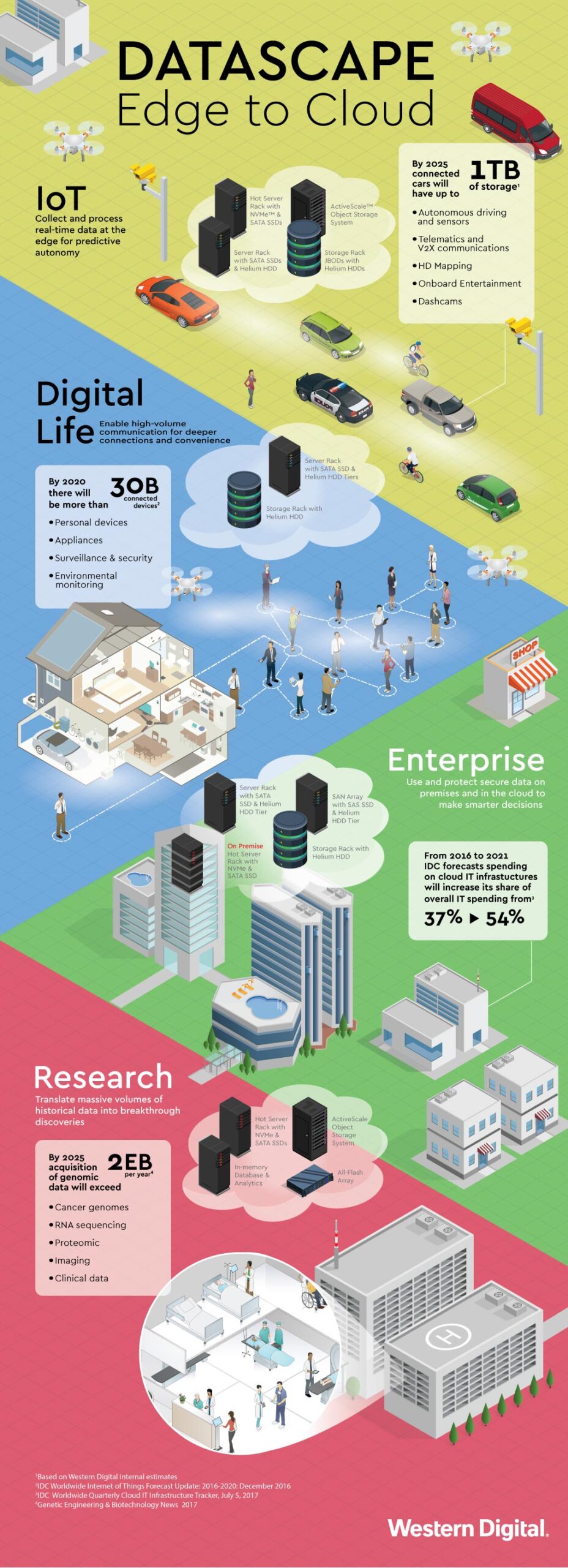Today’s digital transformation is changing the world like never before. We are moving to a more connected reality. Whether it’s the new ways we interact with “things” like cars, phones, tablets and more, or the autonomy enabled by artificial intelligence (AI) and machine learning (ML), do you ever wonder how things store, process and analyze data in the cloud? Is there a one-size-fits-all infrastructure to support applications from home surveillance to precision medicine?
The answer in a word is “No!” All of these innovations have different needs from their respective clouds.
In the coming months, this blog series will take a 3-D look at three dimensions of today’s hottest workloads, but it’s not the “3-D” you’d expect. Instead, the “3-D” we’re talking about is: 1) Device, 2) Data and 3) Data Center. We won’t be talking about the plumbing, but will instead dive deep into applications, workloads and new innovations that enable autonomy, deeper connections, breakthrough discoveries and better decisions.
[TWEET “Devices. #Data. Data Center. Here’s a 3-D view of our digital world #IoT #Cloud”]
To help visualize the 3-D view, we have developed an old school “marketecture” or what today’s marketing professionals call an infographic.

Think of the marketecture (i.e. infographic) as a way to help dissect the role of the Device (Edge), the types of data (stream, burst, batch) and the anatomy of cloud (Data Center) workloads like analytics, processing, and archival.
The 3-D View
Here, we focus on four use cases to show how Devices, Data and Data Centers work together to realize the full potential of the data. They have some things in common, but each edge has different requirements of its cloud.
The four use cases are:
- IoT devices, such as autonomous cars, surveillance cameras, drones, wearables, sensors, and more, capture and process lots of data quickly for real-time action. One industry analyst predicts that by 2020 over 30 billion end point devices will be connected with the Internet. An IoT cloud needs to be able to handle data storms from billions of sensors!
- Digital Life apps, such as social media, online shopping, and video streaming enable deeper connections. Digital Life clouds must support high volumes of transactions and, using analytics, make recommendations on-demand.
- Enterprise apps, including ERP, CRM, MRP, email, and more, with hybrid clouds, enable smarter business decisions. Because they contain highly secure data, not all of it can reside on a public cloud.
- Research devices, such as X-rays, sensors, storm trackers, and medical readings capture large volumes of data over time and support precision medicine. This historical data enables comparisons and leads to breakthrough discoveries.
In future posts, we will dive into the cool technologies at each edge and the associated 3-D views. In addition to experts in autonomous vehicles, precision medicine, and enterprise workloads, we may mix it up with educational videos, mind-blowing statistics, and an occasional zombie reference to keep you on your toes.
Up next – one of the biggest issues facing IoT and autonomous things: “The Trouble with Fog”.
Until then, Western Digital is making 3-D come to life starting on August 8th, at Flash Memory Summit. Stop by and check out our edge-to-cloud displays for autonomous cars and content delivery networks, plus our interactive touchscreen demo of the connected life. For more on Flash Memory Summit, check out Rob Callaghan’s Blog, “Flash Memory Summit: Products Matter, But the Problems They Solve Matter Even More”.



